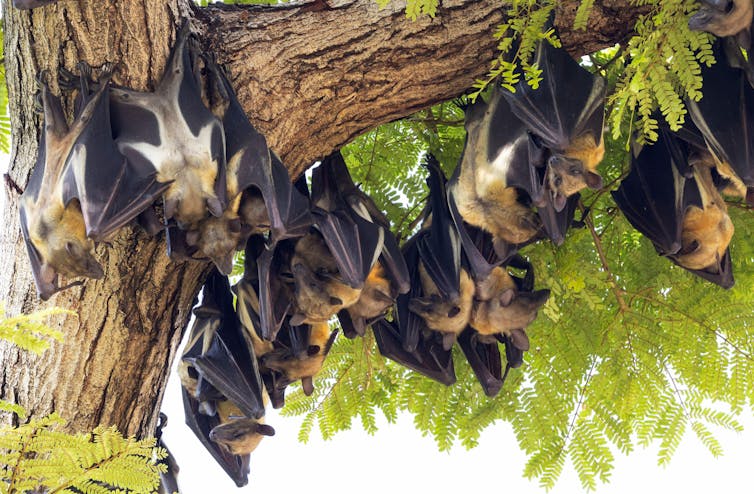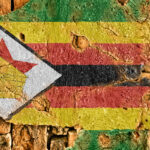There has been an outbreak of the deadly Nipah virus in Kerala, India. Five people have caught the virus, two of whom have died.
The authorities in the Kozhikode district, where the outbreak occurred, have instituted “containment zones” in the area and schools have been closed. Seventy-six people who came into contact with the infected are being closely monitored for signs of the disease.
This is the fourth Nipah virus outbreak in Kerala. The most deadly was in 2018, with 18 laboratory-confirmed cases and five suspected cases, 17 of whom died.
Nipah virus is an RNA virus of the Paramyxoviridae family. The first detected human outbreak occurred in Malaysia in 1998 and caused 265 cases and 105 deaths. Since then, one or two outbreaks occur each year. More than half the people who are infected die.
Outbreaks have most commonly been reported from Bangladesh, but also India, Malaysia, Singapore and the Philippines.
The proportion of Nipah virus infections that are asymptomatic varies from one outbreak to another and ranges from 17% to 45%.
When the virus does cause disease, the main effect is encephalitis (brain swelling). Patients develop a fever and complain of an intense headache, and many will experience disorientation, drowsiness and confusion. Some patients also develop a chest infection.
Treating the Nipah virus
There are no specific drugs to treat Nipah virus, so medical care is merely “supportive”, that is, treating individual symptoms and keeping the patient comfortable until they hopefully recover.
Some treatments look as though they have potential, at least in animal studies, but few studies have been conducted in humans. One small trial of a drug called ribavirin suggested it could reduce deaths, but more studies need to be done.
A targeted therapy called monoclonal antibodies have been shown to be effective at reducing death in green monkeys if given early enough in the course of a Nipah virus infection. But no studies have yet shown how effective these drugs are in humans with Nipah virus.
Nevertheless, the Indian authorities are buying monoclonal antibodies from Australia to use in the current outbreak.
There are no vaccines against Nipah virus although an mRNA vaccine against the virus is being tested in humans.
ALSO READ: BRICS Leaders tackle vaccine shortages by establishing pharmaceutical association
How do people get infected?
In the original outbreak in Malaysia, the main risk factor was contact with pigs or being a pig farmer, but there was no evidence of person-to-person transmission. At the time it was not clear why pigs had started transmitting the infection.
Since the initial outbreak, we have learned more about the virus and the risk factors associated with transmission to humans. It is now accepted that the primary host for Nipah virus is fruit bats, specifically the Indian flying fox. Nipah virus has been previously detected in bats in Kerala.

Most infections are thought to come from contact with an infected animal, either the fruit bats themselves or from intermediate animals such as pigs, as in the first detected outbreak in Malaysia. But there are interesting differences between outbreaks. In Bangladesh, there is an association with drinking date palm sap, either raw or fermented.
In one Bangladeshi study, the researchers used motion-sensor-infrared cameras to show that fruit bats often visited those date palms where villages collected date palm sap for consumption.
Initially, it was thought that person-to-person transmission did not occur for Nipah virus as no healthcare workers were infected during the large outbreak in Malaysia. Since then, healthcare workers have been reported as having caught the infection, as in this most recent outbreak, where one of the deaths was in a healthcare worker who treated a person infected with the virus.
ALSO READ: WhatsApp Doc? ENT Surgeon dispenses free medical insight
Deadly, but doesn’t transmit easily
A study of some 248 Nipah virus infections in Bangladesh conducted over several years concluded that about a third had been caught from another human. The researchers estimated that the R value – the number of people an infected person is likely to pass the disease to – is about 0.33, meaning the infection would be unlikely to spread far from its animal source.
Although the Nipah virus causes a deadly infection there is no evidence that it is likely to spread widely outside of areas where people or their livestock come into contact with infected bats. However, outbreaks of Nipah virus may be another indication that habitat loss as a result of human incursion forces greater contact between humans and animals increasing the risk of animal-to-human transmission.
Even though the R value is low, should infected animals be transported into large cities the increased population density would increase the risk of person-to-person transmission that could enable the evolution of the virus to become more human transmissible and trigger a new pandemic.
Correction: The original article incorrectly stated that the first detected human outbreak of Nipah occurred in Malaysia in 1978. The year was actually 1998.
This story originally appeared on The Conversation and was republished with permission. Read the original article here.













